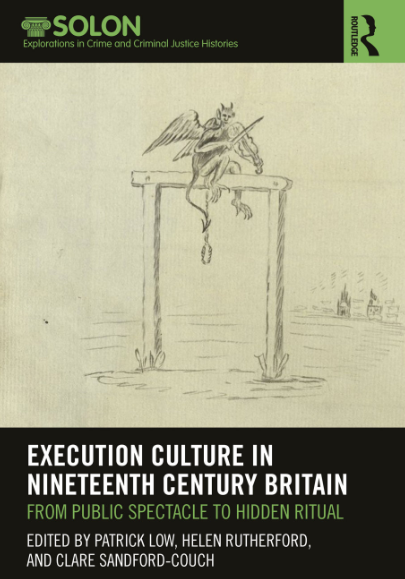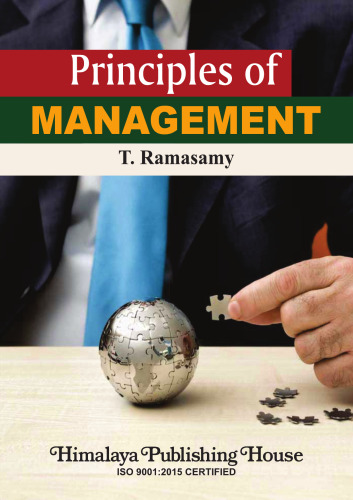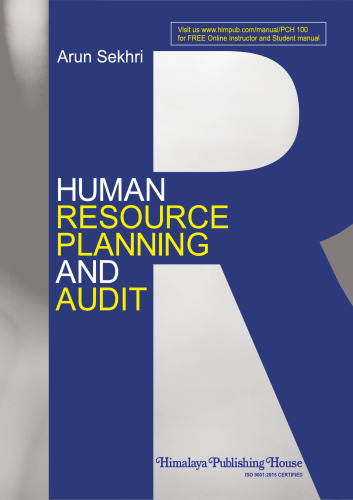In his diary entry of 23 August 1844 railway clerk Richard Lowry reflected on his attendance the preceding day at the hanging of Mark Sherwood on Newcastle’s Town Moor. Lowry noted that the streets of Newcastle were ‘literally crammed with people’ and that there were ‘countless thousands crowding’ towards the Moor, to witness the spectacle of a public execution. Despite taking up a prime position some ‘20 yards from the gallows’, Lowry was far from a proponent of capital punishment. He reflected: ‘what will future ages say at such barbarous proceedings as this. A time is fast coming when such murder will be no longer perpetrated.’1 In one sense Lowry was prophetic; the time was indeed fast approach- ing when public execution would be a distant and brutal relic. However, Lowry may have been astonished to find out that executions would con- tinue in Britain for more than a century. 2 What was fast approaching was not the end of capital punishment, but the removal of the spectacle from public view. A punishment whose raison d’être had been its public expres- sion would become ‘hermetically sealed’. 3 Such was the effect of the tran- sition that in his diaries well over a century later, hangman Syd Dernley observed: It is a curious thought that in early Victorian times there were probably very few people who had not seen an execution. Now, a mere hundred years later, there were very few who had.4 A conference The first half of the nineteenth century witnessed increasing debate in Brit- ain about the merits of public punishment and notable shifts in the staging of the execution, which culminated in the passing of the Capital Punish- ment Amendment Act 1868 (31 & 32 Vict. c.24) (‘the Act’). The Act ended the execution as public spectacle: thereafter, hangings were to be ‘carried into effect within the walls of the prison in which the offender is confined at the time of execution’.5 The crowd, previously central to the system of public punishment, was denied access as the execution took place in private Introduction Patrick Low, Helen Rutherford, and Clare Sandford-Couch 2 Patrick Low et al. in front of a carefully controlled set of invitees. The Act transformed capital punishment in Britain, and yet, surprisingly little has been written on the impact of this legislation. To address this omission, in the summer of 2018, the editors of this volume organized a conference, 1868 – A Civilizing Mo- ment? Reflecting on 150 Years since the abolition of Public Execution.6 The absence of media coverage for what many scholars regard a ‘landmark’ Act was remarked upon at the conference.7 This is illustrated by an exchange on Twitter as the conference was taking place. In response to a tweet that lamented, ‘We missed a really important anniversary. 150 years since the Capital Punishment Amendment Act 1868’,8 conference attendees replied that, ‘we’ve been marking it all day here in Newcastle @1868conference’.9 There is an inherent irony in a work prompted by an overlooked anniver- sary; one perhaps best captured in Alan Bennett’s History Boys, ‘There’s no better way of forgetting something than by commemorating it’.10 The charge is valid and one we, as editors, would be remiss to ignore. It is not in the simple act of commemoration that this collection claims its necessity: far from it. The 150th anniversary of the enacting of the legislation provided an ideal point to reflect more widely upon a period of dramatic change in punishment culture. As such, the chapters in this volume address the fun- damental transformation in nineteenth-century Britain of how capital pun- ishment was presented and to whom and consequently how it was reported and received.
چکیده فارسی
ریچارد لوری، کارمند راهآهن، در دفتر خاطرات خود در تاریخ 23 آگوست 1844، حضور خود در مراسم حلق آویز کردن مارک شروود در تاون مور نیوکاسل را در روز گذشته بازتاب داد. لوری خاطرنشان کرد که خیابانهای نیوکاسل «به معنای واقعی کلمه مملو از مردم است» و «هزاران بیشماری ازدحام میکنند» تا شاهد اجرای یک اعدام در ملاء عام باشند. لاوری علیرغم اینکه در «20 یاردی از چوبه دار» در جایگاه اول قرار گرفت، از طرفدار مجازات اعدام دور بود. او تأمل کرد: «اعصار آینده در چنین اقدامات وحشیانه ای مانند این چه خواهند گفت. زمانی به سرعت فرا می رسد که دیگر چنین قتلی مرتکب نخواهد شد.»1 به یک معنا لوری پیشگو بود زمان واقعاً نزدیک بود که اعدام در ملاء عام به یادگاری دور و وحشیانه تبدیل می شد. با این حال، لوری ممکن است از دریافت این که اعدام برای بیش از یک قرن در بریتانیا ادامه خواهد داشت، شگفت زده شده باشد. 2 آنچه به سرعت نزدیک می شد، پایان مجازات اعدام نبود، بلکه حذف این نمایش از دید عموم بود. مجازاتی که دلیل وجودی آن بیان عمومی آن بوده است به «مهرمیک مهر و موم» تبدیل می شود. [3] تأثیر این گذار چنان بود که بیش از یک قرن بعد، جلاد سید درنلی در خاطرات خود مشاهده کرد: این فکر عجیبی است که در اوایل دوران ویکتوریا احتمالاً تعداد بسیار کمی از مردم بودند که اعدامی را ندیده بودند. اکنون، صد سال بعد، تعداد بسیار کمی از کسانی که چنین کرده بودند.4 کنفرانس نیمه اول قرن نوزدهم شاهد بحث های فزاینده ای در بریتانیا در مورد شایستگی مجازات عمومی و تغییرات قابل توجه در اجرای اعدام بود که به اوج خود رسید. در تصویب قانون اصلاح مجازات اعدام 1868 (31 و 32 Vict. c.24) ('قانون'). این قانون اعدام را به عنوان یک نمایش عمومی خاتمه داد: پس از آن، اعدام باید «در دیوارهای زندانی که مجرم در زمان اعدام در آن محبوس است انجام شود». ، دسترسی به آن ممنوع شد زیرا اعدام در خصوصی انجام شد. در مقابل مجموعه ای از مدعوین که به دقت کنترل می شوند. این قانون مجازات اعدام را در بریتانیا متحول کرد، و با این حال، به طور شگفت انگیزی در مورد تأثیر این قانون نوشته نشده است. برای رسیدگی به این حذف، در تابستان 2018، ویراستاران این جلد کنفرانسی را ترتیب دادند، 1868 - یک لحظه تمدنی؟ تأمل در 150 سال پس از لغو اعدام در ملاء عام.6 عدم پوشش رسانه ای برای آنچه بسیاری از محققین آن را قانون «عطف» می دانند در کنفرانس مورد توجه قرار گرفت.7 این موضوع با تبادل نظر در توییتر در حین برگزاری کنفرانس نشان داده شده است. در پاسخ به توییتی که در آن با تاسف نوشته شده بود: «یک سالگرد واقعا مهم را از دست دادیم. با گذشت 150 سال از قانون اصلاح مجازات اعدام در 1868، شرکت کنندگان کنفرانس پاسخ دادند که «ما تمام روز را اینجا در کنفرانس 1868 نیوکاسل برگزار میکنیم». یکی از بهترین مواردی که شاید در «پسران تاریخ آلن بنت» به تصویر کشیده شده است، «هیچ راه بهتری برای فراموش کردن چیزی جز بزرگداشت آن وجود ندارد».10 این اتهام معتبر است و ما، به عنوان ویراستار، از نادیده گرفتن آن صرف نظر می کنیم. این مجموعه در اقدام ساده بزرگداشتی نیست که ضرورت آن را ادعا می کند: دور از آن. صد و پنجاهمین سالگرد تصویب این قانون نقطه ایده آلی برای بازتاب گسترده تر در مورد دوره ای از تغییر چشمگیر در فرهنگ مجازات بود. به این ترتیب، فصول این جلد به تحول بنیادین در بریتانیای قرن نوزدهم می پردازد که مجازات اعدام چگونه ارائه شد و به چه کسانی و در نتیجه چگونه گزارش و دریافت شد.
ادامه ...
بستن ...
First published 2021
by Routledge
2 Park Square, Milton Park, Abingdon, Oxon OX14 4RN
and by Routledge
52 Vanderbilt Avenue, New York, NY 10017
Routledge is an imprint of the Taylor & Francis Group, an informa business
© 2021 selection and editorial matter, Patrick Low, Helen
Rutherford and Clare Sandford-Couch; individual chapters,
the contributors
The right of Patrick Low, Helen Rutherford and Clare Sandford-
Couch to be identified as the author[/s] of the editorial material, and
of the authors for their individual chapters, has been asserted in
accordance with sections 77 and 78 of the Copyright, Designs and
Patents Act 1988.
All rights reserved. No part of this book may be reprinted or
reproduced or utilised in any form or by any electronic, mechanical,
or other means, now known or hereafter invented, including
photocopying and recording, or in any information storage or
retrieval system, without permission in writing from the publishers.
Trademark notice: Product or corporate names may be trademarks
or registered trademarks, and are used only for identification and
explanation without intent to infringe.
British Library Cataloguing-in-Publication Data
A catalogue record for this book is available from the British Library
Library of Congress Cataloging-in-Publication Data
A catalog record has been requested for this book
ISBN: 978-0-367-33245-7 (hbk)
ISBN: 978-0-429-31883-2 (ebk)
Typeset in Times New Roman
by codeMantr
ادامه ...
بستن ...




![Our mission to the court of Marocco [Morocco] in 1880, under Sir John Drummond Hay - pdf Our mission to the court of Marocco [Morocco] in 1880, under Sir John Drummond Hay - pdf](https://dl.libsan.ir/images/1/12/112108724_694b9e9769312.jpg)





